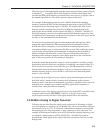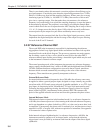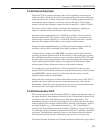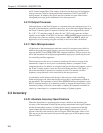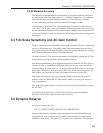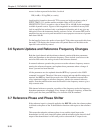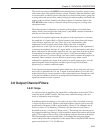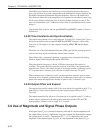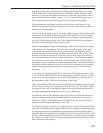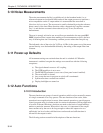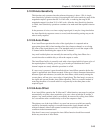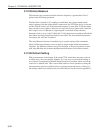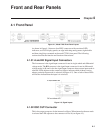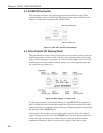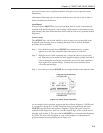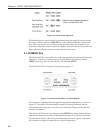
3-13
Chapter 3, TECHNICAL DESCRIPTION
with respect to the reference input) and is computed by the output processor in the
lock-in amplifier and made available as the “magnitude” output. The phase angle
between V
s
(t) and the X demodulation function is called the “signal phase”: this is
equal to the angle of the complex quantity (V
x
+ jV
y
) (where j is the square root of -1)
and is also computed by the processor by means of a fast arctan algorithm.
The magnitude and signal phase outputs are used in cases where phase is to be
measured, or alternatively where the magnitude is to be measured under conditions
of uncertain or varying phase.
One case of varying phase is that in which the reference input is not derived from the
same source as that which generates the signal, and is therefore not exactly at the
same frequency. In this case, if the input signal is a sinusoid of constant amplitude,
the X and Y demodulator outputs show slow sinusoidal variations at the difference
frequency, and the magnitude output remains steady.
However, the magnitude output has disadvantages where significant noise is present
at the outputs of the demodulator. When the required signal outputs (i.e. the mean
values of the demodulator outputs) are less than the noise, the outputs take both
positive and negative values but the magnitude algorithm gives only positive values:
this effect, sometimes called noise rectification, gives rise to a zero error which in
the case of a Gaussian process has a mean value equal to 0.798 times the combined
root-mean-square (rms) value of the X and Y demodulator noise. Note that unlike
other forms of zero error this is not a constant quantity which can be subtracted from
all readings, because when the square root of the sum of the squares of the required
outputs becomes greater than the total rms noise the error due to this mechanism
disappears.
A second type of signal-dependent error in the mean of the magnitude output occurs
as a result of the inherent non-linearity of the magnitude formula: this error is always
positive and its value, expressed as a fraction of the signal level, is half the ratio of
the mean-square value of the noise to the square of the signal.
These considerations lead to the conclusion that when the magnitude output is being
used, the time constants of the demodulator should be set to give the required signal/
noise ratio at the X and Y demodulator outputs; improving the signal/noise ratio by
averaging the magnitude output itself is not to be recommended.
For analogous reasons, the magnitude function also shows signal-dependent errors
when zero offsets are present in the demodulator. For this reason, it is essential to
reduce zero offsets to an insignificant level (usually by the use of the Auto-Offset
function) when the magnitude output is to be used.
Note that the majority of signal recovery applications are scalar measurements, where
the phase between the required signal and the reference voltage is constant apart from
possible phase reversals corresponding to changes in the sign of the quantity being
measured. In this situation the lock-in amplifier is used in the normal X-Y mode, with
the phase shifter adjusted to maximize the X output and to bring the mean Y output to
zero. (Refer to section 3.12.03 for further information on the correct use of the Auto-
Phase function for this purpose.)



